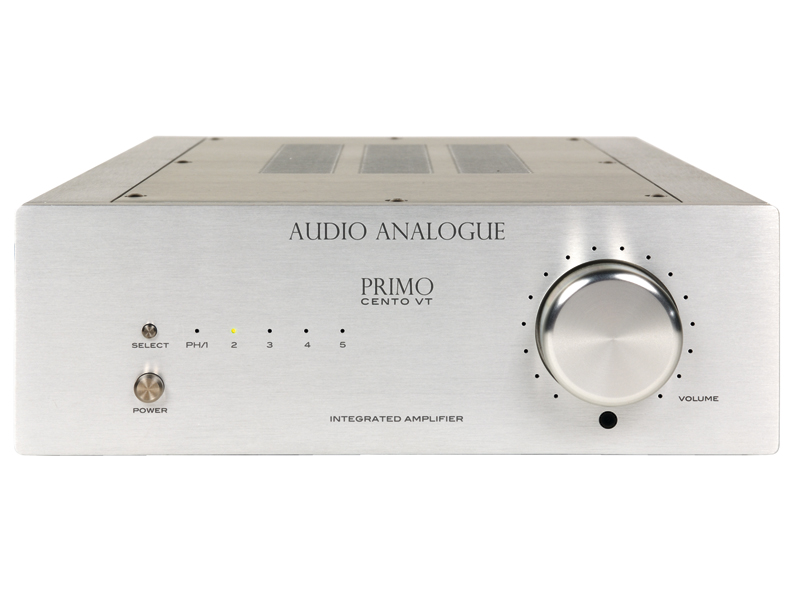TechRadar Verdict
A rather idiosyncratic amplifier, not suited for use with high-output sources, that slightly colours the sound and, at the same time, offers a rather less involving version of events despite admirable agility
Pros
- +
Does well with more complex pieces
- +
Solid build
Cons
- -
Some colouration
- -
Underwhelming performance
Why you can trust TechRadar
The shape and dimensions of the Audio Analogue Primo Cento VT are similar to those of the well-known Cyrus series of electronics, but the look is very different, based as it is on substantial lumps of aluminium, very smartly finished.
To be brutally frank, we didn't care overmuch for the controls of this amplifier, especially the 'nudge'-type volume control (twist it a little and hold it there to turn the volume up or down), but that's obviously highly subjective and there's no denying that appearance-wise, the first impression this model makes is a good one.
Amplifier design
Things are a little out of the ordinary within the case, too. The unit's considerable weight turns out to be largely due to its huge toroidal transformer, which occupies nearly half the internal space. Behind it are heatsinks for each channel and nestling between them a single valve – physically single, that is, but containing two active elements, one per channel.
The components mounted on the heatsinks look at first glance like transistors, but turn out to be power integrated circuits, each one effectively a whole power amp on a chip. As a pair, they operate in bridged mode, making the output effectively balanced and increasing considerably the power available from a single chip.
Other internal points of note include a couple of the biggest polypropylene film capacitors we've ever seen and a tiny phono board, which nestles near the right-channel loudspeaker terminals. It's capable of handling both types of cartridge, though you need to get the lid off to make the change.
Input/output provision is quite modest, with four line inputs (five if no phono option is fitted) and a tape output.
Detailed imaging
Our listeners couldn't quite decide what it was about this amplifier that bothered them, but it's clear something in its tonality isn't absolutely neutral.
Comments were made about a lightness of touch (which isn't always a bad thing, of course), but also, in other tracks, about good, deep bass that brought out details barely perceptible through the other amps. The amp also seems to be a touch shy in the upper bass, though the very lowest octave or two comes through nicely.
Sometimes tonal aberrations in amplifiers are symptoms of more complex limitations, but here it seems there's nothing more serious amiss and after a little while, one becomes accustomed to the balance and learns to accept it.
That done, there's plenty to admire in the Cento VT's handling of detail, imaging and, especially, swiftly changing musical dynamics and textures. It is, as one listener commented, very agile.
Complex creature
As a result, it relishes musical complexity, having a whale of a time with the swirling, kaleidoscopic orchestrations of many early 20th-century composers, but also gets on well with complex studio productions of contemporary rock and pop.
All the same, it does sometimes seem reluctant to commit fully, leaving you wishing for a little more involvement. Frustrated by exactly this aspect, one listener made a rather irritable comment about 'half-fat sound', and there is a slight lack of grip that can lessen musical communication.
A well-mannered amp with a lot going for it, but it isn't the most commanding performer.
The TechRadar hive mind. The Megazord. The Voltron. When our powers combine, we become 'TECHRADAR TEAM'. You'll usually see this author name when the entire team has collaborated on a project or an article, whether that's a run-down ranking of our favorite Marvel films, or a round-up of all the coolest things we've collectively seen at annual tech shows like CES and MWC. We are one.
